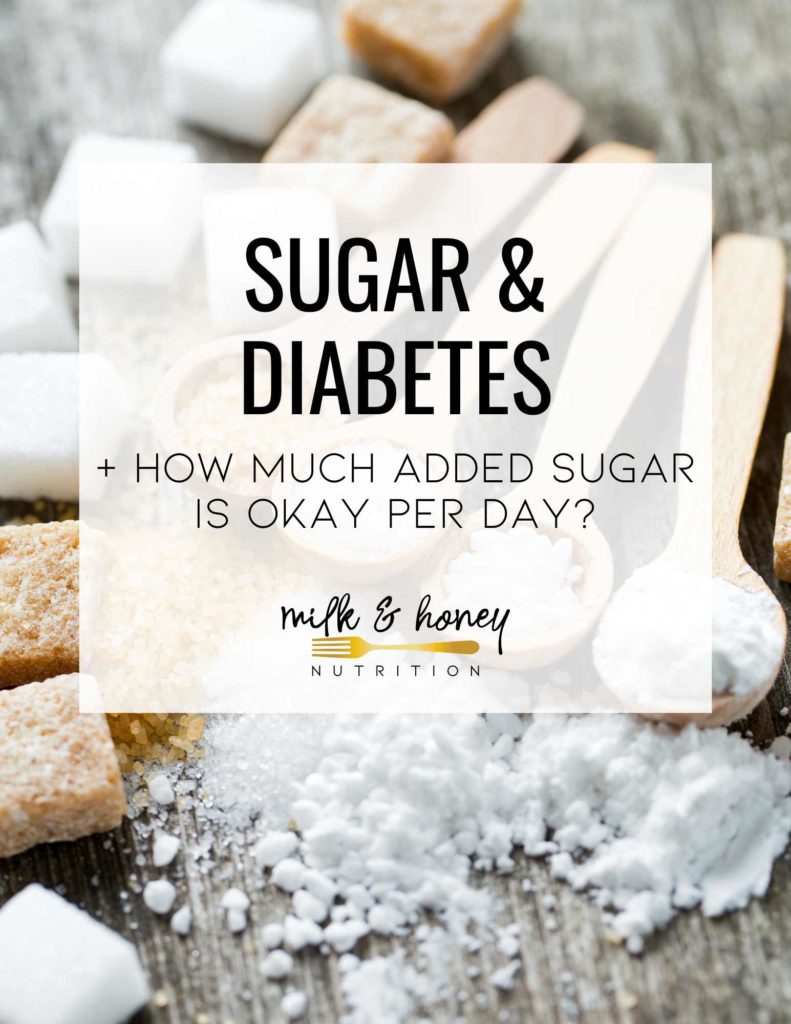
In this article, we’ll cover everything you need to know about sugar and diabetes.
Whether it’s an article claiming sugar causes diabetes, or someone asking if you can still eat sugar when you have diabetes, odds are you’ve seen or heard something about sugar and diabetes. Below, we cover everything you need to know in an easy to understand way.
When someone develops diabetes of any kind, their body can no longer digest carbohydrates properly. Sugar is a type of carbohydrate. In fact, it’s the carbohydrate that raises blood sugar levels the quickest. Because of this, lots of misconceptions about sugar and diabetes exist.
Sugar and diabetes
Many people living with diabetes have a fear of sugar and wrongfully assume they can’t eat or drink anything with sugar in it. There are things to be aware of when it comes to sugar and diabetes… but, you can still eat it.
Because sugar can raise your blood sugar/glucose levels quickly (which can cause a blood sugar spike and unstable blood sugars), we want to find ways to slow down how quickly it can raise your blood sugar level.
Balancing blood sugar levels
Eating foods that contain fat, fiber, and protein along with foods that contain sugar will slow down how quickly your body can digest that sugar. This is what we want, and when you learn how to choose these foods and pair them together, it becomes a lot easier to maintain stable blood sugar levels and still enjoy the foods you love.
Read more about choosing the right foods for your blood sugar levels here.
Does sugar cause diabetes?
Let’s get the biggest question out of the way first. Does sugar cause diabetes?
No. Sugar does not cause diabetes. Whether it’s added sugar or naturally occurring sugar… neither causes diabetes.
There are many different causes for the different types of diabetes, and none of them are eating too much sugar. Read more about those here. Some of the causes are things we have the ability to control and change… but most of the known causes of diabetes are outside of our control.
Be careful how you talk about sugar and diabetes
A lot of the stigma around diabetes is a result of this belief that sugar causes diabetes and the cultural focus on high sugar foods causing diabetes. Whether it’s a joke or a lighthearted comment, these beliefs and statements only further push this idea that sugar causes diabetes and that it’s somehow your fault. I encourage you to be careful about the way you speak about diabetes, and please don’t make diabetes jokes. Odds are someone who hears it has diabetes, and trust me… they don’t find it funny.
Naturally occurring sugars
Some sugars occur naturally in foods (they aren’t added in during processing). Foods that naturally contain sugar include milk and milk-products, grains, fruits, and vegetables.
These 6 types of sugars include:
- glucose
- fructose
- galactose
- sucrose
- lactose
- maltose
Read more about the different types of sugars here.
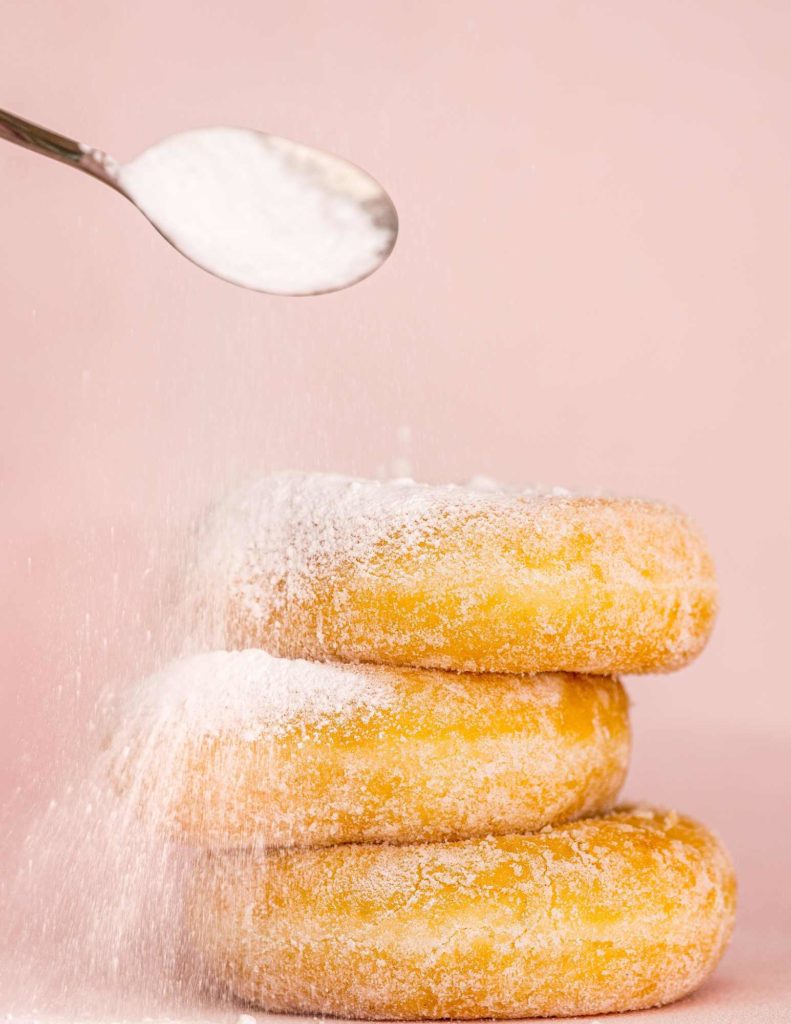
What is added sugar?
Added sugar refers to sweeteners and sugars that are added into our foods during processing. Examples include:
- Adding sugar to a flavored milk
- Fruit canned in syrup
- Quick cooking oatmeal packet with brown sugar added
Different names for added sugar
There are over 61 different names for added sugar. That’s a lot! Some of the names for sugar that you’ll see in ingredient lists are more obvious, like:
- Sugar
- Honey
- Agave
- Sucrose
- High fructose corn syrup
- Fructose
- Glucose
- Maple syrup
- Molasses
But there are some that aren’t as obvious:
- Barley malt
- Dextrose
- Maltose
- Cane juice
- Dextrin
- Maltodextrin
- Maltol
- Mannose
- Maltose
- Muscovado
- Panocha
- Saccharose
- Sweet sorghum
- Treacle
These different names for added sugar can be found in about 74% of packaged foods.
Check out my post on blood sugar friendly packaged snacks here!
What does no added sugar mean?
When a product says it has “no added sugar” this means no sweeteners (that contain sugar) were added to the food, and it’s relying on natural sources of sugar like fruit or milk. Some examples of no added sugar foods would be:
- Energy balls sweetened with dates instead of a syrup or granulated sugar
- Oatmeal with raisins
- A smoothie with bananas and strawberries and no syrups
These products may also use alternative or non-nutritive sweeteners that do not contain sugar but do add a sweet taste to the dish or food. Examples of these sweeteners include:
- Stevia
- Monkfruit
- Sucralose
- Aspartame
- Sugar alcohols
- …and others
Some of these sweeteners can be incredibly useful when managing diabetes and finding ways to sweeten food without adding additional sugar. Take a more in-depth look at the different types of sugar alternatives and sugar alcohols here.
Is no sugar added the same as sugar free?
“No added sugar” does not mean sugar free.
“No added sugar” foods may contain naturally occurring sugars… in fact, it likely does if they’re using that label.
“Sugar free” means the food/product does not contain any kind of sugar. But, it may contain some of the artificial or non-nutritive sweeteners we discussed above.
Added sugar and diabetes
To our bodies, sugar is sugar. Whether it’s added in or it occurs naturally, it gets processed the same way. But, there is a difference to consider for people living with diabetes.
Remember what we discussed above about making sure we pair sugar with fat, fiber, and protein? Well, when you think about the foods with naturally occurring sugars, they also have fat, fiber, and protein already in them:
- Milk has sugar but it also has fat and protein
- Fruit has sugar but it also has fiber
- Grains have some sugar but they also have fat, fiber, and protein
What other nutrients come with the sugar you eat?
I like to ask myself, “what kind of company does the sugar I’m eating keep? What other nutrients come along with it?”
Because naturally occurring sugars come along with sources of fat, fiber, and protein, your body may digest them slower than added sugars. Foods with added sugars may not always offer significant sources of fat, fiber, and protein. Some do, and some don’t.
Because of this, I recommend following the 2020-2025 Dietary Guidelines for Americans… 10% or less of your calories should come from added sugar. This means approximately 50g or less of added sugar/day.
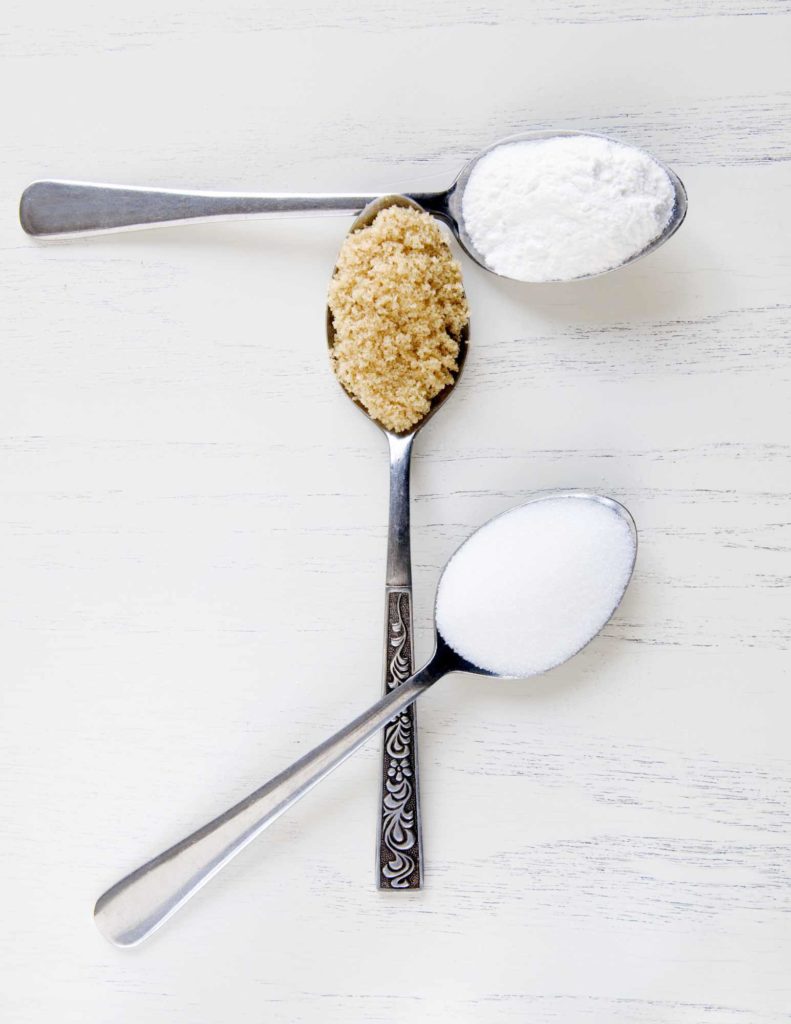
“Natural” sugars and added sugars
In this day and age of “clean eating” marketing, you’ll find many different food products promoting they use natural sugars instead of refined sugars. But, remember these are still sugar too. Some may come with a small amount of fiber or additional vitamins and minerals… but they are still sugar. And, they will still impact blood sugar levels and are all forms of added sugar. Let’s review some of the most common natural sugars below…
Does honey have added sugar?
Yes, honey can be a source of added sugar when added to a food or recipe. It does offer some amazing health benefits though and is a great way to treat a low blood sugar.
Does maple syrup have added sugar?
Just like honey, maple syrup is a source of added sugar and should be used in moderation or in combination with protein and fiber sources.
Brown sugar and diabetes
Brown sugar is made from molasses that comes from the sugar cane plant. It is a source of added sugar and should be used in moderation just like other sources of added sugar.
Coconut sugar and diabetes
Coconut sugar might be one of the most commonly used “natural” sugars and is often promoted as being healthier. While it is still added sugar and will raise blood sugar levels, it does have some additional fiber and vitamins that the other sugars listed here do not have. If you like the taste, it might be a good option for you.
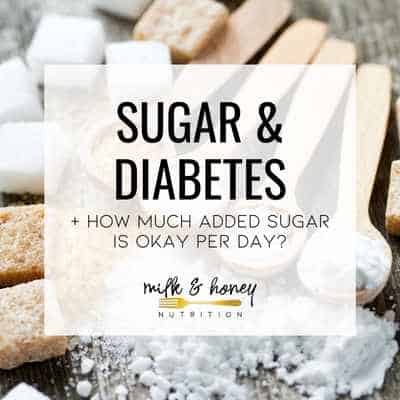
A final word on sugar and diabetes
At the end of the day, when it comes to sugar and diabetes, moderation is key. Bring mindful of the foods you eat and drink matters. Yes, you can absolutely manage your blood sugars and still enjoy foods that have sugar in them. Combining those foods with fat, fiber, and protein sources, as well as being mindful of portion sizes and total carbohydrate counts is key.
For more information on balancing blood sugars and managing diabetes, check out my Diabetes 101 page.



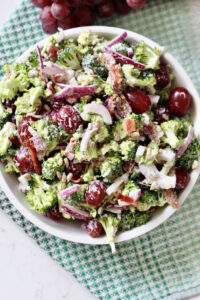

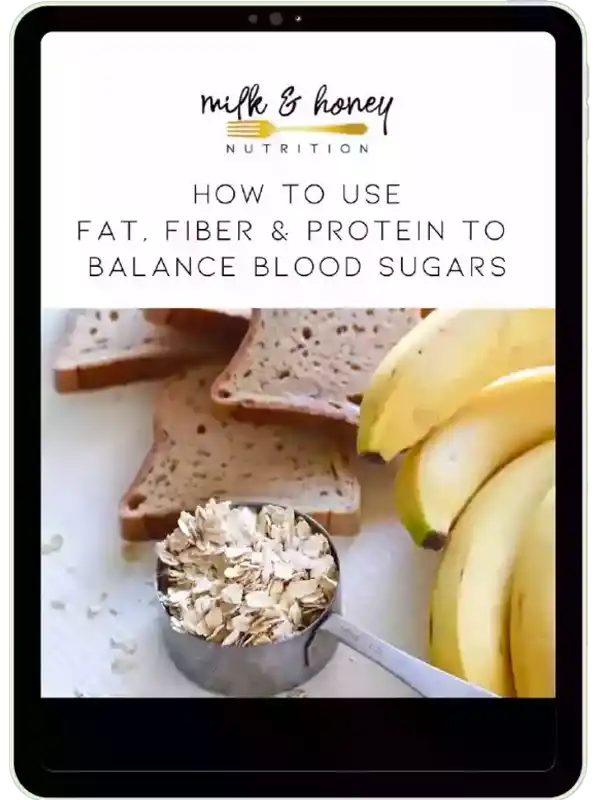
One Response
Want to learn more about healthy foods for diabtes.